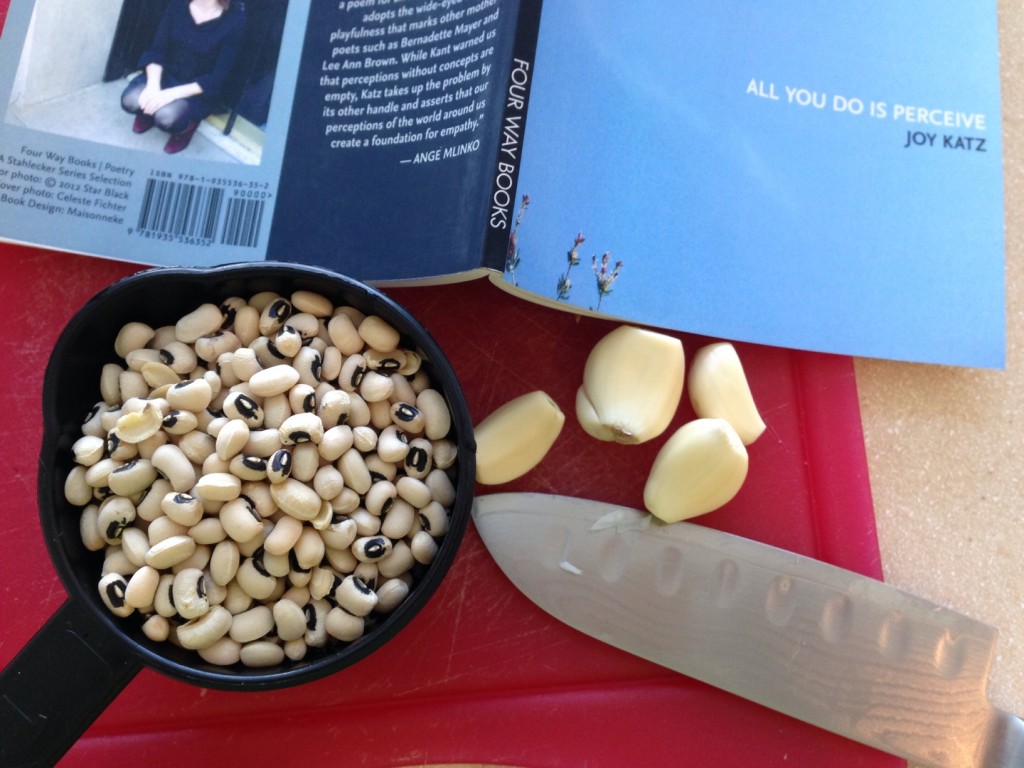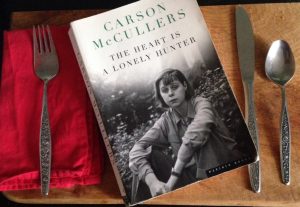Hello! Welcome to Blog People, a new venture here at the Lightning Room in which interview editors Simon and DeWitt interview their fellow denizens of The Blog. For our first installment, Simon talks with Sherrie Flick, author of the monthly column “Eat Drink Book.”
1. Can you talk a little bit about your column, “Eat Drink Book”? By my understanding, it seems to be a mixture of food and drink in literature, and literature in food and drink – what inspired it?
I have ongoing obsessions with both food and writing so it seemed natural to combine them when Sheila Squillante invited me to write for PANK. In my column I look at food/drink in literature on a variety of levels. Recreating food from some books and eating it and reporting in on the results/revelations, looking closely at food within the text, and sometimes including recipes. I want to discover and explore the ways food and literature intersect.
2. Did you have a particular journey-through-food-to-literature or journey-through-literature-to-food? Or have the two always gone hand in hand?
The two have pretty much gone hand in hand for me, although I’ve come to connect them more directly in recent years. I was an English Lit major with a creative writing focus as an undergrad at the University of New Hampshire, and I also worked my way through school at a wonderful bakery in the nearby town of Portsmouth. I continued to work as a professional baker (and write) after I graduated and moved to San Francisco. My creative process is tied to baking in so many ways. (Here’s an essay I wrote about that for Necessary Fiction.)
3. The community of PANK is such a widespread one. Where are you located – beyond the internet – and what do you do there outside of PANK?
I live in Pittsburgh. I’m a fiction and non-fiction writer, and I teach adjunct in Chatham University’s MFA and Food Studies programs. I work freelance as a writer and copy editor for (mainly) arts organizations, and I write a regular garden-to-table food column for Pittsburgh Quarterly magazine. I occasionally curate literary programs around town (previously, I was Artistic Director for the Gist Street Reading Series for 10 years). I cook and bake and garden, and I also play the ukulele.
4. How did you come to know PANK, and to be involved with it?
I’ve known and admired PANK through social media connections for some time and got to know PANK a bit more through Sheila Squillante.
5. What book – not a cookbook, that’s the easy way out – makes you hungriest when you read it? This doesn’t necessarily have to be about food; we’re talking appetites in general.
Wow. That’s a hard one. A book that was important to me in understanding how fiction and food can connect in amazing ways is Jim Crace’s The Devil’s Larder. It’s a book of fantastical flash fiction all focused on food – but in doing so it’s also focused on family and love and hate and lust too. So I’d credit The Devil’s Larder with whetting my appetite in many ways.
6. Of all the books you’ve read, what is one impossible food or drink that you’re dying to try? (This can either be ‘impossible’ as in ‘utterly fantastical’ or ‘impossibly impractical or difficult to prepare.’)
I would love to sit at John Singer’s table in The Heart is a Lonely Hunter. He would silently serve me wine and gin and oranges that he’d pulled from his closet, and I would tell him my deepest secrets.
***
Sherrie Flick is author of the novel Reconsidering Happiness and the flash fiction chapbook I Call This Flirting. She lives in Pittsburgh.
Simon Jacobs curates the Safety Pin Review, a wearable medium for work of fewer than 30 words. He may be found at simonajacobs.blogspot.com.
![[PANK]](https://pankmagazine.com/wp-content/themes/pank/assets/images/pank-logo-large.png)





